A Screen that is a Garden
On a semi-rural lot, a neighbor has erected a bright white privacy fence, functional, but stark. It was my intention, with or without the existence of a fence, to plant a screening bed along the lot line.
With ample room for some depth to the bed and a profusion of plant choices, my question is: how does one layer plants to create a garden, as opposed to a rigid, perfunctory screen? Because it is along a lot line, the space is naturally linear, but straight lines are not desired.
The challenge for me is to break away from seeing that straight line, and visualize something else. Is there a way to play with this in sketches? There is a wide, curved path planned that will sweep toward, then away from the lot line, but otherwise the slate is blank.
Just writing down the question helps!
Comments (27)
john9791
14 years agolast modified: 9 years agoSpeaking from 60+ years experience in the landscape design field: the white fence is there, you can't change that. Shut out the view of the fence with American Pillar Arborvitae, then work on your bumps and curves inside of that line. Visit www.americanpillarnursery.com for more ideas
lazy_gardens
14 years agolast modified: 9 years agoReplacing the white fence with a tall green wall of skinny evergreens just replaces one problem with another.
Post a couple of pictures of the area so we can download it and mess with solutions.
Have you asked the neighbor if you can paint your side of his fence something other than bright white? Maybe a neutral grey, blue or green?
Letting the white show through in some spots will increase the apparent depth of your yard. For example, create a small pocket seating area next to the fence by putting some tall plants out several feet and paving that area.
Related Professionals
Holly Springs Landscape Architects & Landscape Designers · New Mexico Landscape Architects & Landscape Designers · Vernon Hills Landscape Architects & Landscape Designers · McKinney Landscape Contractors · Hampton Bays Landscape Contractors · Peachtree City Landscape Contractors · Saint Paul Landscape Contractors · Wailuku Landscape Contractors · Washington Landscape Contractors · Detroit Decks, Patios & Outdoor Enclosures · Honolulu Decks, Patios & Outdoor Enclosures · Myrtle Beach Decks, Patios & Outdoor Enclosures · Rantoul Decks, Patios & Outdoor Enclosures · Villa Park Decks, Patios & Outdoor Enclosures · Genesee Stone, Pavers & Concretecatkim
Original Author14 years agolast modified: 9 years agoIt's a vinyl fence, and I won't be painting it. A rigid line of evergreens is the sort of thing I want to avoid. The objective is to obscure that straight line, make the delineation uncertain. Standing on the path, I hope you'll wonder, "Where does it begin, where does it end?"
The location is tropical rainforest and growing a density of plants will not be difficult. The question is how to do it coherently and attractively. My mind keeps returning to the concept of layers of plants, by which I mean mixing different shapes and heights and spacing -- but when I google that, I only find propagaton techniques, so maybe my terminology is incorrect. : ) I have access to lots of rocks and can easily purchase boulders, if that helps stimulate ideas...
laag
14 years agolast modified: 9 years agoOne option is to make independent groupings and then to infill between them. That would be less linear than the rythem approach of repeating similar groupings. You could throw a twist into it by adding some topography in some areas and not others.
Random tangent of thoughts .... you could swing the bed way out and in some off centered part, add topography (mound it to some degree) so that as you view it from an angle there would be that section, then lawn (or whatever your negative space is), followed in the distance by the continuation of the fence planting - that would give a layered depth. Maybe intensify the contrast between that foreground part of the planting by using brighter foliage color than what would be viewed behing it.One interesting thing that you get from this type of layout is that as you walk along, the foreground plants seem to move from one side to the other as viewed against the plants in the background.
isabella__MA
14 years agolast modified: 9 years agoThe straight line of can be a unifying factor and mitigated by a curvaceous bedline, as already provided. The fence can be obscured by taller decidous shrubs and evergreens along it's length or simply in sections. Not all spots need be layered, there can be areas you can see into and under the shrubs for small "holes" or caves into the border.
The white vinly fences are somewhat attractive but not really natural enough of a sense for my taste. Also these sections usually only come in pre-fab sections and when installed on undulating ground are not installed plumb, which can make them look awkard.
Central_Cali369
14 years agolast modified: 9 years agoI had a similar problem with a cinder block wall. This is what worked for me: I visualized long, triangle-shaped beds, with the wall being one side of the triangle (not the base of the triangle). It's kind of hard to explain, but the base of one triangle and the tip of another create a nice little nook where you could place a lawn chair or some sort of visually impacting item, like a boulder, a fountain or a little sitting area. If you make two or three triangle-shaped beds along the fence, you get a nice long planting with varied depths. I planted medium sized trees (Erythrina Crista Galii) or Phoenix Canariensis at the base of every triangle bed, and filled the rest with varying perennials and succulents like Aloe Arborescens, Agaves and Phormiums.
Please let me know if I this made sense. If not, I can provide some sort of drawing! haha
Josh
karinl
14 years agolast modified: 9 years agoWhether the land is sloping in one direction or another is also going to affect the impact of your plantings. and whether you want to enclose your bed in a wall.
I like Josh's general layout, which need not be the outline of the bed but the general pattern of your plantings. Carol's idea and similar ones of movement or apparent movement to and from the fence, vs along it, will also help. In my case, we have a long narrow yard and my design breakthrough came when I thought of creating lines and spaces going across the yard rather than along it.
It is honestly not the worst idea, if space is not an issue, to plant some sort of a plant backdrop along the fence, or to put in a sister fence that you like, and work from that instead of from the stark white. I wouldn't do a row of identical evergreen cultivars, necessarily, but consider that many of the best British borders are backed by a fabulous hedge. A background of small lilacs or something along those lines could be very romantic (as long as you could get in to prune it). The design in front of the green boundary can be the same, just with a background that you like.
KarinL
inkognito
14 years agolast modified: 9 years agoWhat are the dimensions of this plot Kim? One sure way of breaking up a straight line is to have other lines coming off it at right angles. If you have the space you could have a loose line of something or other coming away from the fence at 90 degrees with a gateway/arch in it that your path passes through. Combined with Andrews ideas above this could work. It is probably height that will cause the biggest upset to that white line of plastic, if you want to sketch it out first play with blobs rather than specific plants and when you have your Miro you can talk with David about the plants.
luckygal
14 years agolast modified: 9 years agoI'm by no means an expert but I'd do an informal mixed irregular border with deciduous and coniferous shrubs and trees, vines and perennials but it depends on your style. If budget does not allow for large trees spaces can be filled with trellised vines against the fence until trees and shrubs grow. You might also use potted plants or vines on pedestals in places. Not sure if you can attach pot hangers to the fence in this case. Another possibility would be to plant white flowering plants and shrubs in front of the green shrubs and trees. The glimpses of white fence might make more visual sense then.
I always think that "A picture is worth a thousand words" so I'll post some links for you to look at. These were quick random choices so no guarantees. :-)
This isn't totally filled in but perhaps it's not necessary, depends on the look one wants: http://realestate.msn.com/slideshow.aspx?cp-documentid=21702349#2
Trellises when covered with vines certainly can cover the fence and this is just an idea for a style of trellis. Not sure if they are only used as an architectural feature here or have vines planted: https://www.houzz.com/photos/millstone-water-feature-raised-beds-and-trellises-for-flowers-contemporary-landscape-phoenix-phvw-vp~39417
Not as full a look as I'd do but another choice - large rocks are good if you have them or can afford them: https://www.houzz.com/photos/redmond-front-landscape-contemporary-landscape-seattle-phvw-vp~21726
Lighting might be something you want to do as well: https://www.houzz.com/photos/shell-beach-residence-contemporary-landscape-san-luis-obispo-phvw-vp~38660
Even a veggie garden can be used as a screen: http://realestate.msn.com/slideshow.aspx?cp-documentid=20521545>1=35000#15
catkim
Original Author14 years agolast modified: 9 years agoNow we're cooking... I like it when everyone has a slightly different idea. I'd like to be open to anything, even some things that don't seem right for the location, such as trellises. It helps to not think of these things literally, staticly, but to plunk the concept in my mind and let it drift and morph.
For me laag really nailed it with the "independent groupings" with infill, and "add topography". Josh's triangles are a similar concept. I never would have thought of a mirror in this context, but that, along with lazygardens suggestion of depth by allowing a bit of the fence to show, could be interesting, something to save for later.
The cleared area where this is beginning to happen is about 65 ft. wide with the fence to the north, and another 35 ft. of uncleared forest to the south. And Ink, you just pounded a block in place for me with the gate -- I had seen a moon gate at a friend's house, really loved it, but couldn't see how to incorporate that idea here, but boulders and a moon gate? Maybe. Imagine a serious refrigerator-sized black nobbly lava boulder placed perpendicular to the fence, and a moon gate extending that perpendicular line... The primary plant along the fence will be a 20 ft tall suckering red-stemmed palm with dark green pinnate leaves, undulating outward toward the path. Some lush grass, moss on the rocks, oh, swoon!! You guys are great, thanks!!
Example of a moon gate from web
{{gwi:9823}}Cyrtostachys renda (photo found on web)
{{gwi:9824}}inkognito
14 years agolast modified: 9 years agoI'm glad the brainstorming worked Kim. I am also posting to bring you back to the top after a severe spam attack.
catkim
Original Author14 years agolast modified: 9 years agoUpdate-- Husband and I had a 6-hour drive each way to a family event over the weekend, giving us lots of time to chew on these concepts. Husband is very analytical and asked, "What is it you don't like about the fence?" Not that he couldn't figure it out himself, but he likes to begin at the beginning and spell things out, while I tend to race ahead intuitively, and sometimes miss things. After some thought I defined it clearly: I see the fence as a color and material that is out of character with the surrounding landscape, and the entire subdivision. Most fencing here tends to be either lava rock walls or wire hog fencing that becomes invisible as plants grow around it, thus the white vinyl really sticks out as a suburban solution in a more rural and natural landscape. While I respect that it is their fence and their choice to build to suit their taste, my choice is to minimize the visual impact on my side of the fence.
We discussed shifting the focus away from the fence with other garden elements as a better way to find a solution rather than directly focusing on remedial solutions at the fence itself. I explained all the various contributions from this thread, which he found very interesting, in particular the suggestion to add topography. He commented, "you want the garden to be three dimensional."
We got a little hung up on the gate idea. "Where does the moon gate idea come from? Why do you need a gate?" My usual thought process for garden planning involves visualizing things, not always with a rational, clearly stated purpose; I know some kind of large, open gate is right, but I couldn't quite verbalize *why*. Bringing my 'visions' to mind and examining them, it clicked for me: the large open gate concentrates one's focus and frames a view. Just recently I saw an article about a woman who teaches plein air painting. In a photo, she was holding a small rectangular matte, essentially a cardboard frame. She explained that her students are often frozen when viewing, for example, a mountain that they must paint -- "it's too big, how can I possibly paint that on this little canvas?" But hold up the cardboard frame, choose your view, and suddenly a possible painting comes into focus. My husband responded that he had recently seen a film director use a similar method for framing her scenes, holding the rectangle out at arm's length, drawing it closer, to help decide how much to 'zoom' the camera for various shots. The big open gate can work in a similar fashion, framing a 'shot' of the garden, pulling the eye toward the desired view, and helping to minimize the visual pull of the fence. Further, the property has an existing utilitarian gate at the drive entry, so now the challenge is to find a way to modify the entry gate as well, and get the two gates to relate to each other and pull the garden together even more. Husband is in charge of hardscape, and enjoys that kind of challenge.
Another idea that surfaced during this discussion: find some military camouflage netting to temporarily hang on our side of the fence until the new plantings get some size. This could reduce the glare of reflected sunlight coming off the white vinyl. Or it could look like Dogpatch! : D We'll see...
The planning, discussing, and search for clarity is a fun part of the process for us. If there is any interest in following this garden as it develops, I can post occasional updates.
inkognito
14 years agolast modified: 9 years agoCan I sign up for that kim. The how do I hide a horrible fence question often comes up and it would make a good reference.
The technique of going back to first principles is useful if you have the intellectual capacity for it as it often help avoid clich It wouldn't be too difficult to make a frame with nine equal squares to view you garden by the rule of thirds, it sometimes helps to look through half closed eyes if you are having difficulties envisioning, say a gate in an open space. One other thing, is there any kind of spray paint that would stick to the fence, I am thinking of the spackle finish that people spray under a car.
inkognito
14 years agolast modified: 9 years agoNot squares rectangles, sorry.
Here is a link that might be useful: rule of thirds
nandina
14 years agolast modified: 9 years agoA thought to muddy your thought process. When designing for this type of situation I always start with the foreground. What is the important point in the foreground that is viewed from a patio or approach view where it is necessary to anchor the eye downward as the beginning point of the design? It is here that I place large rocks, low colorful shrubs, perhaps a pond or statuary. The rest of the plan flows from that point. It can be a spot that welcomes one onto a path into vegetation, so easy to do in tropical climates. When dealing with a long, straight expanse the eye needs direction to this single point to make the design work. Others will disagree with me, but think about it.
amili
14 years agolast modified: 9 years agoHow does one layer plants to create a garden, as opposed to a rigid, perfunctory screen?
By concentrating on the plants textures, heights, overall shapes, colors and blooms, then by mixing them artistically with some amount of repetition you can avoid the perfunctory screen and create a garden and not a hodge podge planting that will hide the hideous vinyl fence.
Kim I would suggest you pick a limited palette of plants that will hide the fence and repeat them down the line with the amount of symmetry, order or randomness that is pleasing to your eye. This backbone can then be further gardenized by a more diverse foreground planting.
The ubiquitous screening plant in Hawaii is the areca palm. As a hedge it is dull. As a component of a garden they are very nice. This clumping palm will hide the fence and are readily available from small to large sizes however much you are willing to spend. They could act as the bulk (50%)of you garden screen broken up by other plant textures and species.
Common red and pink ginger can make a fine screening plant.
No shortage of heliconia to choose from.
Clumping bamboos. I think the shorter stature ones would be better. The big ones get gigantic.Add some height and structural trunk with Manila or Alexander palms.
Focal point and height travelers palm
Small trees like alspice would fit in with a different texture.Crotons come in a range of colors. I would pull shrubs forward in the planting to avoid the hedge look. Other shrubs to consider are plumbago, mock orange and hibiscus of course. Planted singly or in twos within the rest of the screening they will add new texture and shape.
That is 12 species there. If you pick a dozen species you like and plant them down the line (not in a straight line necessarily) the inherent differences will create some depth and movement. The melody is up to you.
Then you can go to town in front of that with the EEs, anthuriums, bromeliads and on and on.
amili
PS. I must add give them all ample room to reach mature size because they will be there in 3 years or less.
catkim
Original Author14 years agolast modified: 9 years agoInk, thanks for the link. It's useful to have a specific concept to reference -- especially when discussing design with my husband! : D Since you are interested I will post updates and points to ponder as the garden progresses -- bear in mind this will be a slow process.
Interesting Nandina, not muddy at all. Your comments reinforce my desire for a very large boulder and a gate. The moon gate photo posted above is inspiration, by the way, not a precise rendering of what WILL occur. How fabulous would it be to have a huge copper moon gate, yes, but not so easy to source. Husband is talking rusted steel, an idea I like very much. We will reserve a space for it, but it's not likely to materialize for quite some time.
Amili -- Ah, nice plant list! I have already sourced five 7-gallon Cyrtostachys renda, expecting to space them about 6 ft apart, and am trying to find more. Their form is comparable to the Dypsis lutescens you mentioned. I am advised they do not like any competition for sun or water, so will have to let them get established before filling in with other plants. Sorry to say I am actually removing a few Alexanders on the property because they seed profusely, and can get weedy. Also a few cocos that are too close to the house, don't want to get beaned by falling fruit. (Yes, I am sort of a palm snob. : ( ...sorry! ) But I adore heliconia, gingers, and anthirium in particular -- lucky to have a number of them already -- had to remove a lot of vines and weeds to uncover them. And travelers palms can be so stately. I don't think I've seen any in the neighborhood, I wonder why not?
I just love it that palms can reach mature size in 3 years or so, woo hoo! I want to grow some Monstera, too, love all the giant leaf possibilites. I'm going to feel like Alice in Wonderland.
amili
14 years agolast modified: 9 years agoNo problem Kim you can be a palm snob. There are plenty to choose from and it doesn't have to be the same old, same old. One of my former lovely assistants moved to the Big Island and was working at a palm nursery. They had quite an extensive list of palms. I will see if I can find him in my e-mail and contact him to find out How zit going.
The Cyrtostachys renda was the most frequently killed palm in landscapes in Kihei. They are fussy. It was my impression that they also can not cope with wind to any degree. Their preferred habitat is understory mottled shade in high humidity conditions protected from wind. Kihei was the desert leeward side so that did not help. In Alexander Palm land I know you get more wet. I do think you will find too that absent the removal of the nuts all palms in those conditions have the potential to become "weedy".
amili
amili
14 years agolast modified: 9 years agoFound him and the nursery. It looks to be mostly a mail order nursery of small seedling to one gallon size plants. The species list is extensive. Maybe they have bigger stuff that got to big to ship for local sales.
Kapoho Palms It has a Pahoa address. #'s (808) 936-2580, fax (808) 965-0550
amili
catkim
Original Author14 years agolast modified: 9 years agoI notice the species list is dated 2007. Unfortunately Kapoho Palms has sold its inventory and I think the new nursery at a different location goes by the name Kalapana Palms. I met Terry on my last visit and he gave me a tour of the grounds, what a fantastic place, and for sale, if anyone wants 11 acres in Kapoho. I had been hoping to buy the C. renda from him, but they were all sold.
I can see how the C. renda would need shade and protection in Kihei, not really the best climate for them. And wind -- isn't that a sailboard and kite-surfing mecca? On the east side they like to be in the sun and really appreciate the ample rainfall.
amili
14 years agolast modified: 9 years agoOh well, things change. That may have been why my former lovely assistant was so intent on sending me some of their palms right before I left in 2007.
amili
woodyoak zone 5 southern Ont., Canada
14 years agolast modified: 9 years agocatkim - count me in as one who would like to see updates (pictures please...!) It sounds like a very magical/fun thing to be doing!
Ink - thanks for the photography link on 1/3s. I've passed that on to DH who is a good amateur photographer who got a fancy to new camera for Christmas to play with - retirement project :-) I use the 1/3 proportions a lot when I'm planning things to build for the garden but what was in that link makes me see other opportunities to use it.
catkim
Original Author13 years agolast modified: 9 years agoFor those who might remember this question from last year, I thought I'd post an update. First, a photo of said fence shortly after it was constructed.
Sorry, I didn't realize the photo would be quite so humongous. I will use restraint in the number of photos posted.
Did I solve the problem? Uh, yes and no. By yes, I mean the fence doesn't feel like it's "in my face" anymore. One reason is because in getting to know the very nice neighbors better, they mentioned the fence is only to restrain their dogs, and once the plantings on their side fill in, (planted more than 2 years ago and growing rapidly) they plan to take the fence down. Yes, I did plant 7 Cyrtostachys renda along the fence. They were fairly good size, but it will be 3 to 4 years before they accomplish much in the way of screening. Another 10 much smaller C. renda have been added to the original 7, allowing for the desired undulating shape along the fence -- the first 7 are in a rather soldierly line. It will be 8-10 years before the bed fully achieves the intended look. (That's the "no" part of my answer.)
Using an old magician's trick, I've opted for distraction by developing the "middle garden" in this area. The original 3 palms I planted have grown tremendously in one year, and we've planted a pool of grass around them. (Planted -- it's not growing yet.) Beyond the grass is the beginning of a curving red cinder path, an allee of Areca vestiaria. The path leads to a clearing at the rear of the lot where we hope to construct a simple open platform with a roof on it. We started referring to it as a "tea house", but you might call it a pavilion, or a gazebo, a yoga studio, a tiki cocktail hut, a meditation room, or beer garden, depending on how we make use of it from one day to the next.
Getting back to the garden, I wanted to post 'before and after' pix, but that would be too many photos. Consider the above as a 'before' photo, even though that was AFTER the heavy equipment came in to remove the trash trees and the jungle tangle, leaving bare, broken lava which immediately sprouted rampant weeds.
I don't have a moon gate yet, but I have a boulder -- together with the palms around a 10,000 gallon water tank to the left, they "frame" an entry to the middle garden. If you walk across the left side of the lawn -- which appears here as a smooth dirt area -- toward the first boulder on the left, you arrive at the Areca vestiaria path.
In the end, screening the white fence has become "small stuff" and we're not going to sweat the small stuff. Sometimes the best solution is an attitude adjustment.
As a complete amateur, visualizing, planning, and implementing a garden in phases on what for me is a huge scale has been an enormous challenge, but also very satisfying. We've done tons more work in the garden and on the house interior than shown here, and have tons more to go. It's a labor of love, and we take time off to play, too, so things are moving forward a little at a time. Most recent acquisition for the house: a couple of cheap but very comfortable chairs to rest our weary bones in when day is done.
timbu
13 years agolast modified: 9 years agoCompliments - you've done a lot in one year!
(and it's a cute alley too)Frankie_in_zone_7
13 years agolast modified: 9 years agoAlthough stark white fence sounds bad to look at, I expect it to be much less of a problem as soon as even a few spots are obscured, hence the focus away from trying to make the whole fence go away, and on to what do you want to do, to look at, or walk by/in/around, instead.
This sounds like a great project for rough sketches and doodle-balloons/circles to start with, but with some attention to scale, meaning, need to know whether you have 6 feet or 10 feet or 20 to work with.
Also in shifting from just obscuring the fence, you can think maintenance. You may want a navigable path between your plantings and the fence, hidden mostly, if you have room to pull the plantings away from the fence. Also, depending on light and water conditions and what things spring up unwanted in your area, and what you plant, remember that if you are changing from lawn, for example, to large cultivated "beds", you will exchange fairly simple mowing for yearly truckloads of mulch, or for very careful planting for how trees and shrubs and plants can be organized to inhibit weeds via shade and root competition, or do a lot of weeding, or all 3. That is one reason why you might sketch out a long-range plan and then implement a few sections and see how it works out and how it might need to be tweaked.
catkim
Original Author13 years agolast modified: 9 years agotimbu -- thank you for your kind comment!
frankie -- "Balloon sketches" are exactly my skill level. :-D I did a few in an attempt to explain to my husband what I was trying to do. As an architect, he was hoping for more precision, (I have difficulty keeping things in scale on paper) but he admits the gardens are shaping up much as I had sketched them. The sketches help me keep my thoughts organized, otherwise I would have nothing but arm-waving and hand gestures.
There will be a (1) Street Garden on either side of the drive -- not yet started. We've begun to develop the (2) Front Garden which is viewed from the living room (shown below in 6/2010, then freshly mulched 2/2011 ). A (3) Side Garden sort of existed already, and we've cleaned it up. I put a (4) Pocket Garden next to the carport, literally carving it out of the jungle, exposing tall hapu'u ferns and a nice rocky outcropping where I added 3 slender, colorful palms and a smattering of orchids. The (5) Middle Garden is taking shape, pictured above, but much yet to be developed. The (6) Areca vestiaria path will lead to the (7) Tea House Garden which is in the "conceptual design" stage now. (roll eyes) Sounds real official, but that just means we are stacking rocks where we think the platform will go, and working on removing trash trees and acquiring palms appropriate for planting along the lot line. The unfenced section of border with our neighbors, although not exactly a garden, will also require a massive overhaul, removing a small pile of 40 ft. logs and the massive choke of weeds behind them. So there is a general plan, and as you note, it often needs to be tweaked!
You are correct that maintenance is a serious issue. We are only here a week or two at a time 4-6 times a year. I finally hired someone to weedwhack and mow, and that made a huge difference this last visit, as we didn't have to spend 3 days just catching up with the weeds. Also this trip we removed a number of leaning or dead tress and chipped them into a huge mound of hardwood mulch, VERY exciting! :-D Once the palms are tall enough to produce some canopy, some of the weeds will be suppressed by the shade, but until then vigilence is required to prevent the garden being overcome by weed trees and vines. Certain trees can spring up and grow to 20 ft. in a shockingly short time here.
Before mulch:
After mulch:
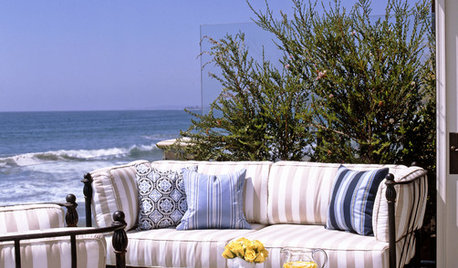

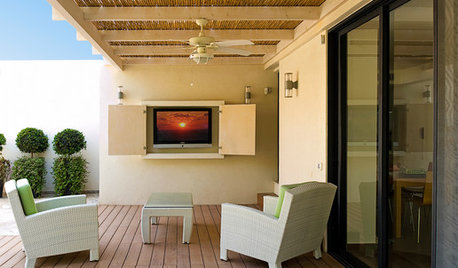
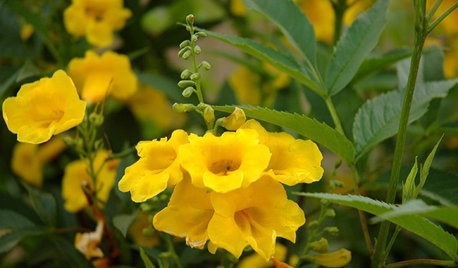
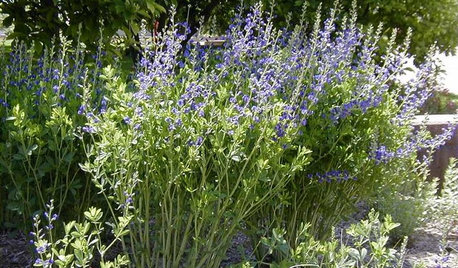

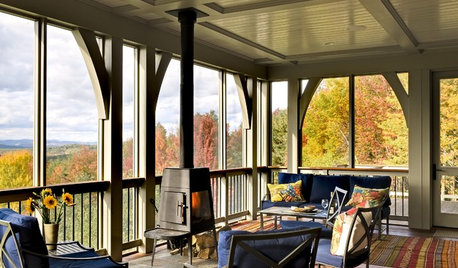
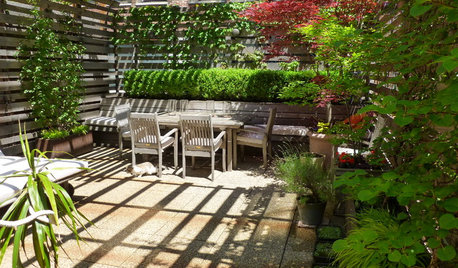

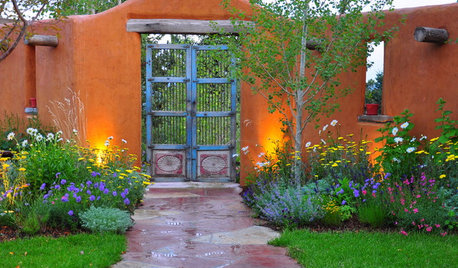








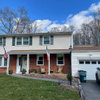

carol6ma_7ari